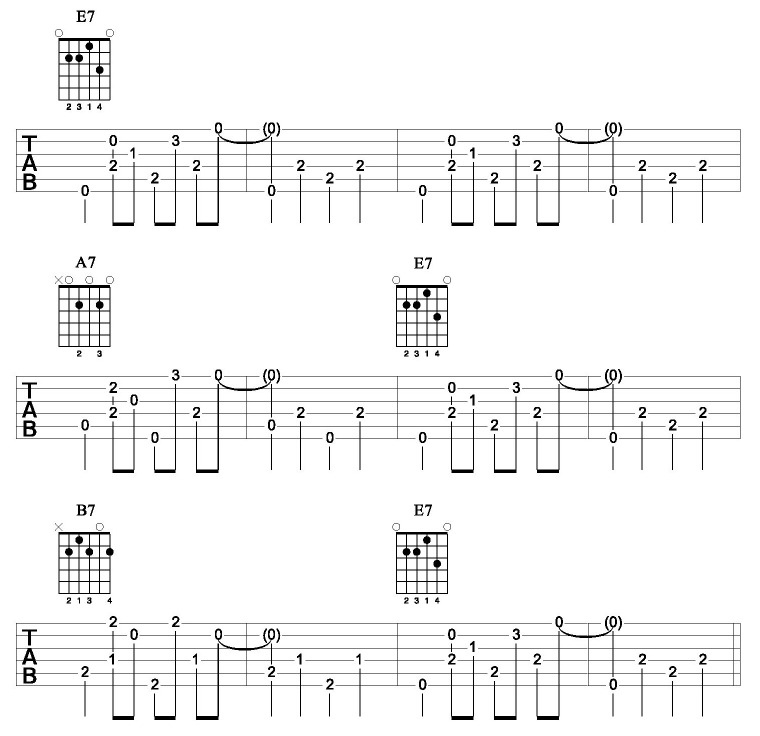Chet Atkins is considered by many to be one of the greatest guitar players of all time. Studying the styles and techniques behind such greats as Chet is a fantastic way to improve your own playing and will often open up a side of the guitar that you may never have considered before, or even knew existed.
Chet Atkins was often referred to as “Mister Guitar” simply because he was fluent in several styles of playing including jazz, classical, and flamenco. Country, however was the style that was at the core of Chet’s playing. In today’s article we will cover a couple of the main techniques that contributed to the style of Chet Atkins and how you can apply them to your own playing. To try and cover everything Chet did in a single article is simply not possible.
Before we get into that though, why exactly do we want to study the styles and techniques of other players?
The answer seems obvious right? To become better in our own playing, to expand on what we can already do, and simply because we really dig what the guitarist we are studying is doing and want to be able to do this ourselves.
These answers are all valid, but it’s not just the techniques and styles of great players that will influence you, it’s their attitude towards their playing and music in general that will influence you too. If you are really into a player, you will or at least should, go beyond simply learning their signature licks. Get into their head and gain an insight into what made them tick and got them to the level they are at.
There have been many times over the years of playing that I have hit flat spots, feeling unmotivated and generally uninspired with my guitar playing. The reasons for this varied, but one great way I found to reignite my inspiration and motivation was to study the style of a player I loved. If I couldn’t think of anyone, then I went searching for someone. This always did the trick and I also expanded and improved upon my own guitar playing.
So let’s do that now with some of the key elements of Chet Atkins’ guitar playing style.
The Art Of Travis Picking
At the core of Chet Atkins’ guitar style is a fingerpicking technique known as travis picking. The name comes from a guitarist called Merle Travis who developed this style of playing. Merle was a huge influence of Chet’s and naturally this fingerpicking technique found it’s way into his playing.
Travis picking is a very impressive technique as it allows you to play the bass, harmony, and melody to a song all at the same time. It’s easy to be tricked into thinking there are two or more guitars playing when in fact it is just one.
The driving force behind the travis picking sound is the bass line. This is played on the bottom 3 strings of the guitar with the thumb of your picking hand. The melody and harmony parts are played with your index (i), middle (m), and ring (a) fingers on the top 3 strings.
Let’s take a closer look at the bass component of travis picking . Here is a picking pattern that Chet would use often:

The order of the strings on which the bass notes fall is how we name these patterns. So the example above would be known as a 6, 4, 5, 4 pattern.
This is best applied to chords whose root notes fall on the 6th string. Chet would sometimes simplify this into a 6, 4, 6, 4 pattern. As you can probably guess, the bass notes only fall on the 6th and 4th strings in this case.
To help the melody and harmony parts stand out more, Chet would palm mute the bass when travis picking. This is important to do as it really helps both the harmony and melody to sit on top of the bass and feature, instead of getting lost in it. Chet would also use a thumb pick at all times, and I highly recommend you do the same as your bass lines will sound much better using one. It can take some getting use to but is well worth the effort for the sound you’ll get.
Here is an example of travis picking complete with melody:

This is typically how Chet Atkins would add melody with his bass line, continuing to pick a 6, 4, 5, 4 pattern. The bass is like your timekeeper, and the driving force behind the line, as it always falls on the beat. Some of the melody notes are sounded at the same time as the bass, however others fall in between the beat, on the offbeat as it is known.
By focusing on the bass line and using it as a reference point to then know where to play your melody notes will help you greatly in keeping everything in time and grooving along.
So what about chords whose root notes are on the 5th string?
Here is how Chet would typically deal with these:

As you can see the bass has now changed to a 5, 4, 6, 4 pattern in reference to the order of the strings on which it falls. Chet would sometimes play a variation of this known as a 5, 4, 5, 4 pattern, however the one above was much more common throughout his playing.
So let’s now take our travis picking and apply it to a 12 bar blues. As soon as I learn something new on guitar, I’m looking for as many ways possible to use it in my own playing because I know that this is the key to mastering it.
The patterns used in the 12 bar blues below are from our examples above:

* You will need to move your second finger to the 2nd fret 6th string for one of the bass notes in the B7 chord. This is another common travis picking manoeuvre.
Double Stops: Harmonising With 3rd’s And 6th’s
A double stop is when you play two notes together at the same time on the guitar. These notes can be on adjacent and non adjacent strings. Chet used double stops extensively throughout his playing. Most times the two notes he played created either a 3rd or 6th harmony.
Chet would often use these double stops to harmonise the melodies of the tunes he played as well as filling the pockets between a vocal line if he was playing with a singer. The result would be beautiful and rich sounding melodic lines that would feature heavily throughout Chet’s playing.
To easily use the harmonies of 3rd’s and 6th’s in your own guitar playing, you need to be able to visualise them on the fretboard. Below are two diagrams that will get you started doing exactly that on the top 3 strings of your guitar.
Thirds


There are several ways you can fret the harmonies above. I have gone with that I believe to be the most logical and efficient way by maintaining the second finger on the 3rd string throughout, and having the first and third fingers fret the higher note in each harmony.
The next step is to get these harmonies into some actual riffs. Here are some in the style of Chet Atkins beginning with a combination of 3rd’s and 6th’s connecting a D7 to G chord:

Sliding into these harmonies, as is the case at the beginning of the 1st and 3rd bars above, was something Chet would often do.
This next lick combines the harmony of a 3rd along with some single notes across a G7 chord:

Chet would often add embellishments to these harmonies such as the pull off in the last bar of the example above. Things like slides, hammer ons, and pull offs will add some really cool sounds to your harmonised lines.
This last lick outlines a C7 to F chord change and exclusively uses 6th’s:

Aside from them featuring heavily throughout Chet Atkins’ playing, 3rd’s and 6th’s should be a part of any guitar players arsenal. They have a unique sound and provide a great contrasting texture to your single note lines. I highly recommend you start getting these into your guitar playing today!
Think of this article as a starting point, and not an end point, when it comes to the guitar playing of Chet Atkins. We have barely skimmed the surface of what this great guitar player provided throughout his career, however if you implement what you have learned here into your own playing, you will be off to a great start.
Check out this free ebook and audio all about fast banjo roll fingerpicking patterns for your acoustic guitar playing. Banjo rolls were another key element to the Chet Atkins guitar playing style and you’ll learn all about them in this ebook.
About the author: Simon Candy is a highly experienced and sought after guitar instructor hailing from Melbourne, Australia. In addition to running his own guitar school, Simon also specialises in lessons for acoustic guitar players, teaching a number of different styles including blues, jazz, rock, and fingerpicking.










